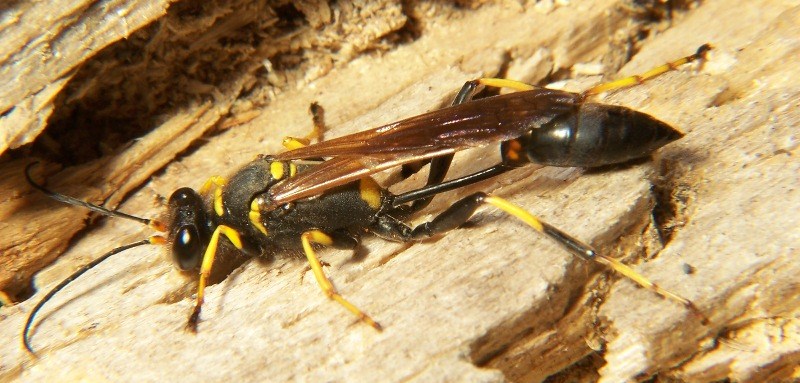Habitat
Sceliphron caementarium build nests that are usually attached to ceilings or walls of
sheds, sides of buildings and sometimes old cars (Resh and Crude
2003). Their nests can
also be found on natural structures such as rock ledges, cliff
faces, or in the hollow part of a tree. The black and yellow
mud dauber wasps can be found around flowers or puddles searching
for mud.
Adult females build the nests out of mud, which is collected at the edge of puddles and pools of water (Dunn 1996). The female uses her mandibles to dig the mud and flies with the mud ball to a dry area where she starts to build her nest (Fink et al 2007). The nests are made up of 25 cylindrical cells that each contain an egg laid by the female and 6-15 spiders for the growing larva to feed on. While she is out looking for prey to put in the cells, the female usually temporarily closes the cell to keep parasites out (University of Iowa Entomology 2012).
The black and yellow mud dauber wasps are commonly found in
Canada, the United States, Central America, South Africa and the
West Indies (Encyclopedia of Life). Below is a picture depicting
where Sceliphron caementarium has been spotted around the
world.
Click here to see a video of a mud dauber wasp gathering materials to build her nest!
Click here to see another video of a mud dauber wasp collecting mud to build her nest!
Go to the nutrition page next to learn what Sceliphron caementarium likes to snack on!
